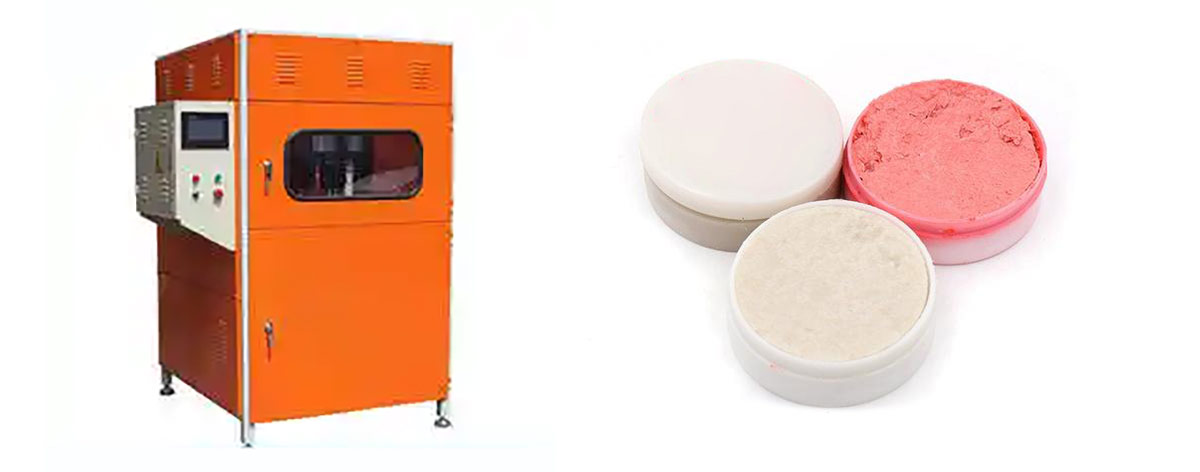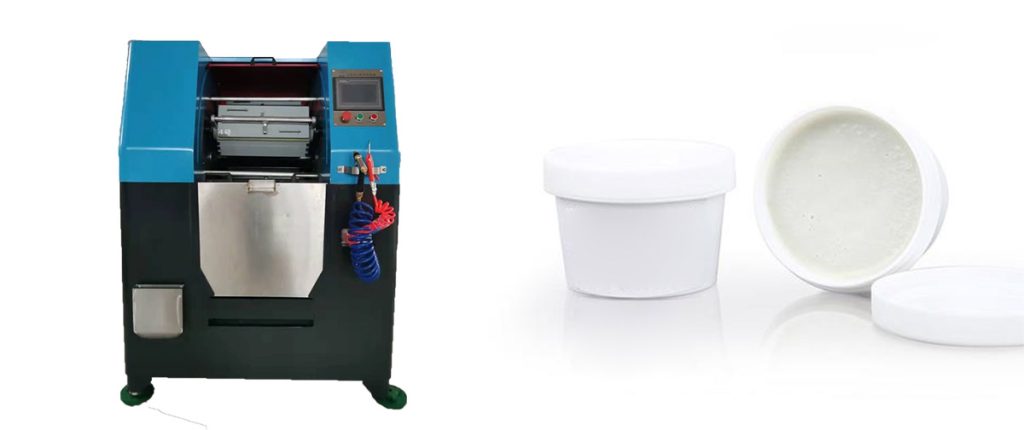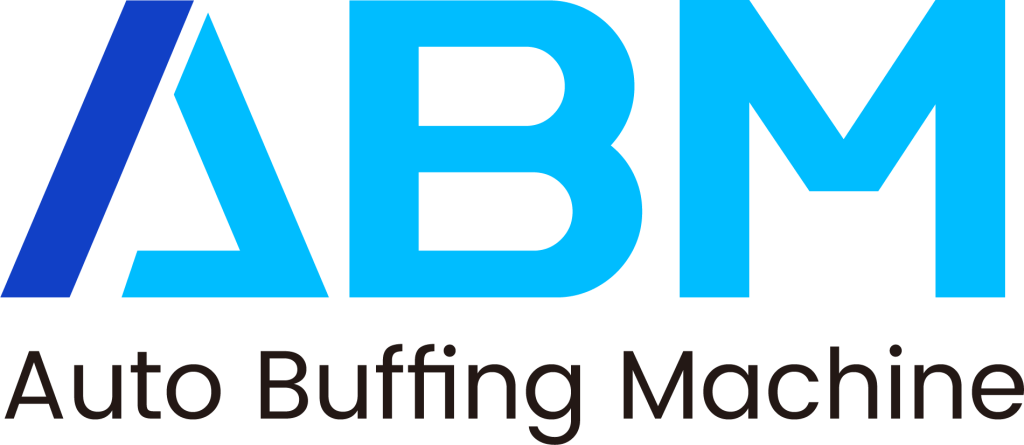

Choosing the correct approach for polishing plastic ensures optimal results. The method and polishing compound for plastic can influence surface smoothness, clarity, and durability. Manual techniques offer control and precision, while mechanical methods provide speed and consistency. Selecting the right combination saves time, enhances efficiency, and improves the final appearance of the material. Professionals and hobbyists alike benefit from understanding how these choices impact project outcomes.
Key Takeaways
- Polishing by hand gives control, great for small details.
- Machine polishing is faster and even, good for big areas.
- Picking the right polish is important for clear, smooth plastic.
- Preparing the surface and staying safe helps the process work well.
- Think about your project, money, and finish to choose the best way.
Manual Polishing for Plastic
Process Overview
Manual polishing is a hands-on approach that requires precision and attention to detail. It involves several key steps to achieve a high-quality finish on plastic surfaces.
- Specimen Movement: The operator holds the plastic piece firmly, rotating it counter to the polishing wheel while moving it back and forth. This ensures even distribution of the abrasive material.
- Polishing Pressure: Applying firm pressure is essential. Experienced operators determine the right amount of force to avoid damaging the surface.
- Washing and Drying: After polishing, the piece is washed with a detergent solution, rinsed with warm water and ethanol, and dried using warm air. This step removes residues and enhances optical clarity.
- Cleanness: Maintaining cleanliness throughout the process prevents contamination of the plastic, tools, and workspace.
These steps in the polishing process are crucial for achieving perfection in surface finish. Proper surface preparation ensures the plastic is ready for polishing compounds, which play a vital role in enhancing surface quality and optical clarity.
Benefits of Manual Polishing
Manual polishing offers several advantages, especially for applications requiring precision and control.
- Operators can make immediate adjustments during the process, which improves production efficiency and reduces errors.
- Advanced sensors and imaging technologies, often integrated into manual setups, help detect surface imperfections early.
- This method is ideal for achieving optically clear surfaces, particularly in acrylic polishing and polishing polycarbonate.
- Manual techniques excel in mold polishing, where intricate details demand careful handling.
For projects requiring polished acrylic or polished polycarbonate parts, manual polishing techniques deliver enhanced aesthetic appeal and a high-quality appearance. The ability to monitor and adapt during the process ensures a high-quality finish that meets specific requirements.
Limitations of Manual Polishing
Despite its advantages, manual polishing has limitations that can affect its suitability for certain applications.
| Method | Limitations |
|---|---|
| Cotton Wheel Buffing | Minimal applications in internal work; cannot provide a uniform finish. |
| Generates ultra-fine multidirectional abrasions affecting clarity. | |
| CNC Preparation | Inaccurate settings can lead to irreparable damage regardless of polishing. |
| Technical Know-How | Metal shops often lack expertise in preparing plastic for polishing. |
| Annealing Requirement | Necessary to prevent stress cracking; failure leads to cracks during use. |
Other challenges include:
- Messy processes that require extensive cleanup.
- Inability to repair deeply affected polycarbonate pieces.
- Risk of introducing new scratches if not performed correctly.
- High costs associated with specialized equipment and handling.
- Use of highly toxic chemicals, which may harm the operator or the material.
Manual polishing techniques demand skill and experience to avoid these pitfalls. Proper surface preparation and adherence to best practices are essential for maintaining the perfect finish and achieving enhanced aesthetic appeal.
Best Practices for Manual Polishing
Achieving a flawless finish on plastic surfaces requires adherence to proven techniques and careful attention to detail. Following best practices ensures consistent results and minimizes the risk of damage during the polishing process. Below are some essential guidelines for manual polishing:
- Surface Preparation: Clean the plastic thoroughly before starting. Dust, dirt, or debris can cause scratches during polishing. Use a soft, lint-free cloth and a mild detergent to remove contaminants.
- Grit Progression: Begin with coarse sandpaper to remove imperfections, then gradually move to finer grits. This step-by-step approach smooths the surface and prepares it for the final polish.
- Polishing Compound Selection: Choose a compound specifically designed for plastics. Using the wrong product can lead to cloudiness or uneven finishes. Compounds formulated for acrylic or polycarbonate work best for achieving clarity and shine.
- Safety Precautions: Always wear protective gear, such as gloves and safety goggles, to prevent injuries. Work in a well-ventilated area to avoid inhaling fumes from polishing compounds.
Tip: Test the polishing compound on a small, inconspicuous area of the plastic before applying it to the entire surface. This ensures compatibility and prevents unwanted reactions.
Case Studies in Manual Polishing Success
Real-world applications highlight the effectiveness of these best practices:
- Laboratory Equipment: Vapor polishing restores optical clarity in polycarbonate lenses, ensuring precision in scientific instruments.
- Automotive Components: Manual polishing achieves a high-gloss finish on dashboard trims and headlamp lenses, enhancing the vehicle’s aesthetic appeal.
- Medical Device Housings: Systematic wet sanding combined with specialized compounds improves clarity and durability.
- Electronic Display Covers: Chemical polishing effectively restores clarity and functionality, extending the lifespan of devices.
By following these best practices, professionals and hobbyists can achieve superior results in their projects. Proper preparation, careful selection of materials, and adherence to safety guidelines ensure a smooth and polished finish every time.
Mechanical Polishing for Plastic
How Mechanical Polishing Works?

Mechanical polishing involves the use of specialized equipment to achieve a smooth and refined surface on plastic materials. This process relies on a plastic polishing machine equipped with rotating wheels or pads that apply consistent pressure and motion. Operators typically use polishing compounds designed for plastic to enhance the surface finish and optical clarity.
The process begins with surface preparation, where the plastic is cleaned to remove dust and debris. Next, the operator selects the appropriate polishing compound based on the material type, such as acrylic or polycarbonate. The machine then applies the compound evenly across the surface, using controlled speed and pressure to avoid overheating or damage.
Mechanical polishing is particularly effective for applications requiring uniform results, such as mold polishing or polishing polycarbonate components. The consistent motion of the machine ensures that the surface is polished evenly, reducing the risk of imperfections. This method is ideal for achieving a high-quality finish on polished acrylic and other optically clear plastics.
Benefits of Using a Plastic Polishing Machine
Mechanical polishing offers several advantages over manual methods, making it a preferred choice for many professionals.
- Efficiency and Speed: Machines can polish large surfaces quickly, saving time compared to manual techniques. This efficiency is especially beneficial for industrial applications.
- Consistency: The controlled motion of a plastic polishing machine ensures uniform results, reducing the likelihood of uneven finishes or scratches.
- Enhanced Aesthetic Properties: Studies show that mechanical polishing improves optical clarity and reduces surface roughness, leading to a polished plastic surface with superior gloss and reduced plaque accumulation.
- Versatility: Machines can handle various materials, including acrylic and polycarbonate, making them suitable for diverse applications like mold polishing and acrylic polishing.
- Reduced Physical Strain: Operators experience less fatigue since the machine performs most of the work, allowing them to focus on precision and quality.
These benefits make mechanical polishing an excellent choice for achieving a high-quality finish on plastic surfaces, particularly in industries where optical clarity and surface protection are critical.
Challenges in Mechanical Polishing
Despite its advantages, mechanical polishing presents certain challenges that users must address to achieve optimal results.
- Initial Investment: Purchasing a plastic polishing machine can be costly, making it less accessible for small-scale operations or hobbyists.
- Learning Curve: Operators need training to use the equipment effectively. Incorrect settings or techniques can damage the plastic or compromise the finish.
- Material Sensitivity: Some plastics, like polycarbonate, are prone to heat damage during polishing. Overheating can cause warping or discoloration, requiring careful monitoring of machine speed and pressure.
- Maintenance Requirements: Regular maintenance of the machine is essential to ensure consistent performance. Worn-out pads or wheels can lead to uneven polishing results.
- Environmental Concerns: The use of certain polishing compounds may produce fumes or waste that require proper disposal to minimize environmental impact.
Addressing these challenges involves proper training, regular maintenance, and the use of high-quality polishing compounds. By understanding these limitations, operators can maximize the benefits of mechanical polishing while minimizing potential drawbacks.
Tips for Using Polishing Compounds with Machines
Using polishing compounds with machines requires precision and attention to detail. Following expert-recommended practices ensures optimal results and minimizes the risk of damage to plastic surfaces. Below are essential tips for achieving a flawless finish:
- Start with Surface Preparation: Clean the plastic thoroughly to remove dust, dirt, and other contaminants. A clean surface prevents scratches and ensures the polishing compound adheres evenly. For surfaces with imperfections, fine-grit sandpaper can smooth out irregularities before applying the compound.
- Choose the Right Polishing Compound: Select a polishing compound specifically designed for the type of plastic being polished. Using the wrong product can lead to uneven finishes or cloudiness. For materials like acrylic or polycarbonate, opt for compounds that enhance clarity and gloss.
- Work in Small Sections: Divide the surface into manageable areas, such as 2×2 feet sections. This approach allows better control and ensures even coverage. Overlapping strokes help blend the polished areas seamlessly.
- Use the Least Aggressive Method: Avoid starting with aggressive compounds or high-speed settings. Begin with a less abrasive compound and gradually increase intensity if necessary. This method protects the surface and reduces the risk of over-polishing.
- Maintain Polishing Pads: Clean the polishing pads regularly during the process. Dirty or clogged pads can cause scratches or uneven results. Replace worn-out pads to maintain consistent performance.
- Monitor Heat Levels: Mechanical polishing generates heat, which can damage sensitive plastics like polycarbonate. Operators should monitor the machine’s speed and pressure to prevent overheating or warping.
Tip: Achieving a perfect finish may not always be realistic. Focus on improving the surface quality without compromising the material’s integrity.
- Apply Compounds with Precision: Use controlled motions to distribute the compound evenly. Avoid applying excessive amounts, as this can lead to buildup and uneven polishing.
- Inspect the Surface Frequently: Pause periodically to check the progress. This practice helps identify areas that need additional attention and prevents over-polishing.
By following these tips, operators can maximize the effectiveness of mechanical polishing while protecting the plastic surface. Proper preparation, tool maintenance, and careful application of polishing compounds ensure a high-quality finish every time.
Comparing Manual and Mechanical Plastic Polishing Methods
Efficiency and Speed
Manual and mechanical polishing methods differ significantly in terms of efficiency and speed. Manual polishing relies on the operator’s skill and effort, making it a slower process. Tasks like mold polishing or polishing polycarbonate surfaces require meticulous attention, which can extend the time needed to achieve a high-quality finish.
In contrast, mechanical polishing offers faster results. Machines equipped with rotating pads or wheels can handle large surfaces efficiently. This makes mechanical polishing ideal for industrial applications where time is a critical factor. For example, acrylic polishing in manufacturing settings benefits from the speed and consistency of machines. However, the initial setup and adjustments for mechanical polishing may slightly offset its time advantage.
Surface Quality and Precision
The choice between manual and mechanical methods also impacts surface quality and precision. Manual polishing allows operators to focus on intricate details, making it suitable for applications like mold polishing or polishing polycarbonate components with complex shapes. This method often achieves optically clear finishes, especially for polished acrylic surfaces.
Mechanical polishing excels in delivering uniform results. The consistent motion of machines ensures even application of polishing compounds, reducing the risk of uneven finishes. For polished plastic surfaces requiring optical clarity, mechanical methods often outperform manual techniques. However, improper machine settings can lead to overheating or surface damage, particularly with sensitive materials like acrylic.
Cost and Accessibility
Cost and accessibility play a crucial role in selecting a polishing method. Manual polishing requires minimal investment in tools and materials, making it accessible to hobbyists and small-scale operations. However, the process can be labor-intensive, increasing long-term costs in terms of time and effort.
Mechanical polishing involves a higher initial investment due to the cost of equipment. This makes it less accessible for individuals or small businesses. Despite this, the long-term benefits of efficiency and reduced labor costs often justify the expense for industrial applications. Additionally, the versatility of machines in handling various materials, including acrylic and polycarbonate, adds value to the investment.
Note: Both methods have unique advantages. The choice depends on project requirements, budget, and the desired level of precision.
Choosing the Right Method for Your Needs
Selecting the appropriate approach for polishing depends on the project’s requirements, the material being worked on, and the desired outcome. Both manual and mechanical plastic polishing methods offer unique advantages and challenges, making it essential to evaluate each option carefully.
Manual polishing suits projects requiring intricate detail and precision. It allows operators to control every aspect of the process, making it ideal for small-scale tasks or surfaces with complex shapes. For example, mold polishing often benefits from the hands-on approach of manual techniques. However, this method demands significant time and effort, which may not be practical for larger projects.
Mechanical polishing, on the other hand, excels in efficiency and consistency. Machines can handle large surfaces quickly, making them suitable for industrial applications. They also ensure uniform results, which is crucial for achieving optical clarity in materials like acrylic and polycarbonate. Despite these advantages, mechanical polishing requires a higher initial investment and operator training to avoid potential issues like overheating or uneven finishes.
Decision-making in polishing:
The selection of the correct tool path, abrasive tools, and process parameters often relies on the expertise of human process planners. However, the complexity of mechanical polishing can limit their ability to detect optimal solutions, highlighting the importance of informed decision-making.
When choosing between manual and mechanical methods, consider factors such as project size, budget, and the level of precision required. Small-scale projects or those involving intricate details may benefit from manual techniques. Conversely, mechanical polishing is better suited for large-scale operations where speed and consistency are critical.
Ultimately, the right choice depends on balancing these factors to meet specific project goals. By understanding the strengths and limitations of each method, operators can achieve the best possible results for their plastic polishing needs.

Conclusion
Manual and mechanical polishing methods each offer unique advantages. Manual polishing provides precision and control, making it ideal for intricate details. Mechanical polishing, on the other hand, ensures speed and consistency, especially for large-scale projects. Selecting the right polishing compound for plastic is equally important, as it directly impacts the surface quality and clarity.
Every project has distinct requirements. Evaluating factors like material type, project size, and desired finish helps determine the best approach. Experimenting with different techniques and compounds allows operators to refine their skills and achieve superior results. A thoughtful approach to polishing ensures both efficiency and quality.
